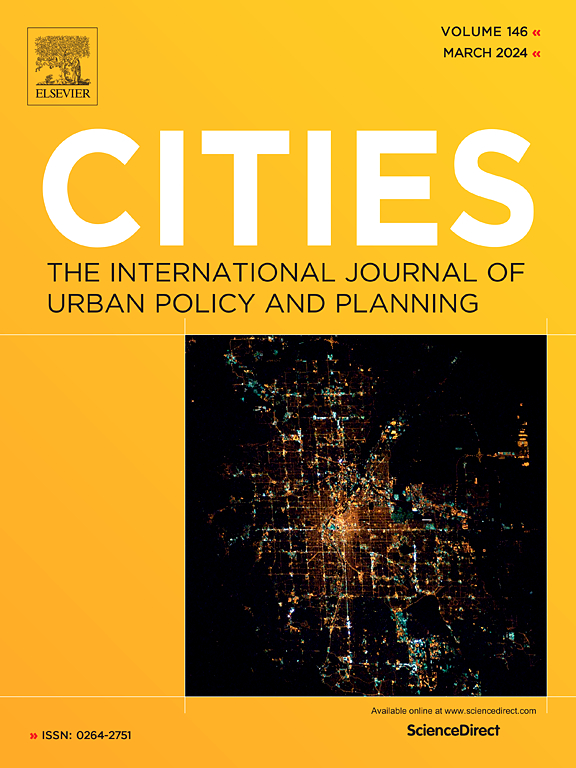City profile: Transformations and challenges of São Paulo's historic triangle
IF 6
1区 经济学
Q1 URBAN STUDIES
引用次数: 0
Abstract
Unlike other American megacities, São Paulo's financial and administrative center has shifted multiple times, specifically four times over the last century. These shifts have significantly affected the city's former centers. This study examines the transformation of São Paulo's original center, the Historic Triangle, where layers of urban development that rapidly overlaid in the 20th century led to the demolition of historic buildings and verticalization. The shift of centrality subsequently caused the decay of this historic center. Despite the decline in its financial and administrative importance, the Historic Triangle remained a valuable site for its architectural heritage, though its cultural landscape and imageability are at risk. The data for this study was gathered from site surveys, historical maps, and experts' opinions and was analyzed using GIS and SPSS. An original 3D video was produced to illustrate the transformation and rapid verticalization of the Historic Triangle. To address the complex architectural landscape, the existing buildings are categorized into three generations: 1stG (oldest), 2ndG (transitional), and 3rdG (newest). We examined each category's façade details, building design, and urban integration and provided recommendations for conservation measures and policies to preserve the site's historical integrity and enhance its new role as a tourist heritage center.
城市概况:圣保罗历史三角区的变革与挑战
与美国其他特大城市不同,圣保罗的金融和行政中心曾多次转移,特别是在上个世纪转移了四次。这些转移对城市的前中心产生了重大影响。本研究探讨了圣保罗最初的中心--历史三角区的变迁。20 世纪,层层叠叠的城市发展迅速叠加,导致了历史建筑的拆除和垂直化。中心位置的转移导致了这一历史中心的衰败。尽管在金融和行政方面的重要性有所下降,但历史三角区的建筑遗产仍具有重要价值,只是其文化景观和形象受到了威胁。本研究的数据来自现场调查、历史地图和专家意见,并使用 GIS 和 SPSS 进行了分析。还制作了一个原创 3D 视频,以说明历史三角区的转型和快速垂直化。针对复杂的建筑景观,将现有建筑分为三代:第一代(最古老)、第二代(过渡时期)和第三代(最新)。我们对每一类建筑的立面细节、建筑设计和城市融合进行了研究,并提出了保护措施和政策建议,以保护遗址的历史完整性,提升其作为旅游遗产中心的新角色。
本文章由计算机程序翻译,如有差异,请以英文原文为准。
求助全文
约1分钟内获得全文
求助全文
来源期刊

Cities
URBAN STUDIES-
CiteScore
11.20
自引率
9.00%
发文量
517
期刊介绍:
Cities offers a comprehensive range of articles on all aspects of urban policy. It provides an international and interdisciplinary platform for the exchange of ideas and information between urban planners and policy makers from national and local government, non-government organizations, academia and consultancy. The primary aims of the journal are to analyse and assess past and present urban development and management as a reflection of effective, ineffective and non-existent planning policies; and the promotion of the implementation of appropriate urban policies in both the developed and the developing world.
 求助内容:
求助内容: 应助结果提醒方式:
应助结果提醒方式:


